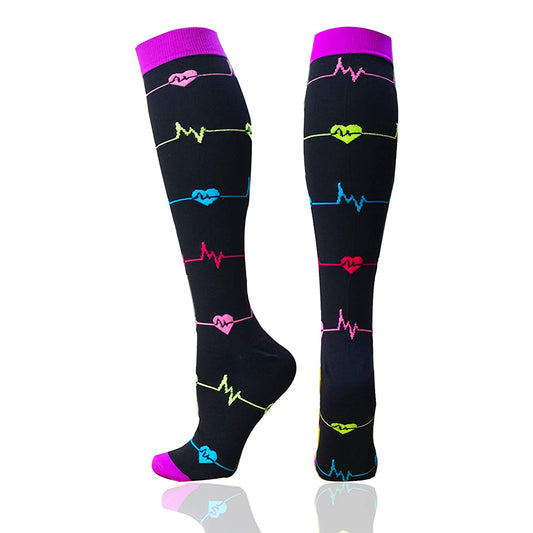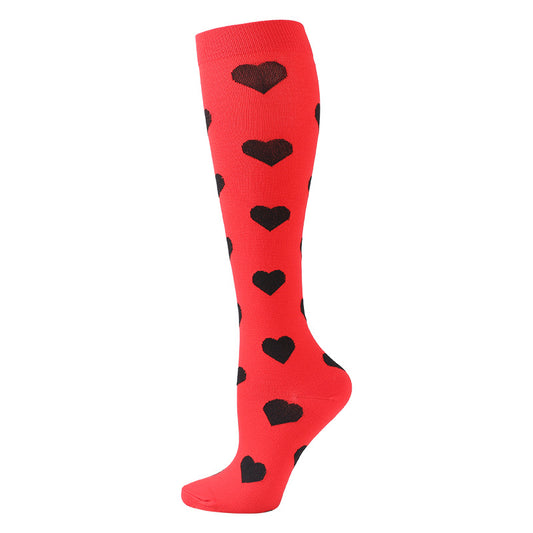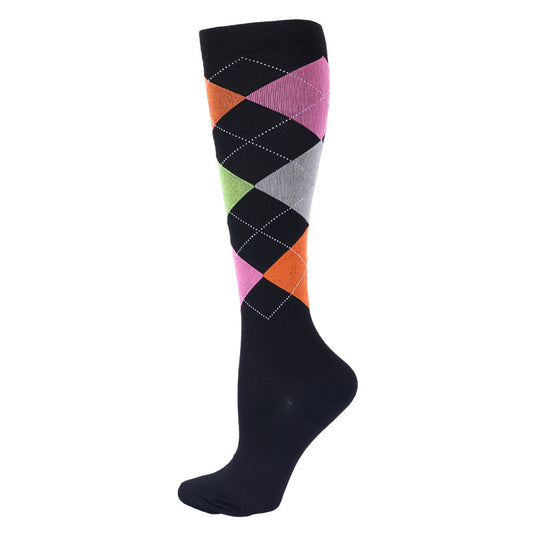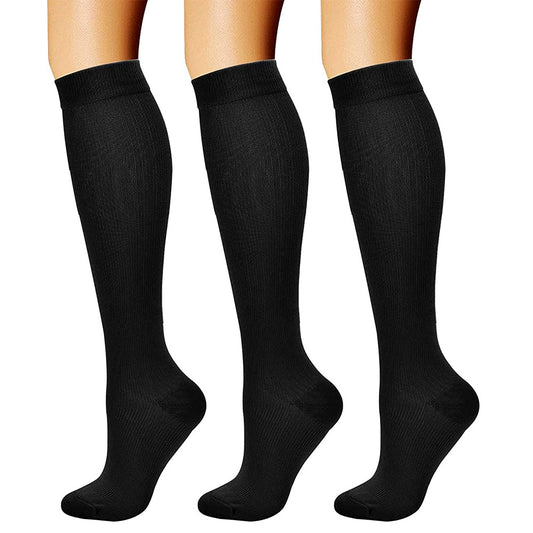-

Compression Socks Women & Men - Best for Running,Medical,Athletic Sports,Flight Travel, Pregnancy
Regular price $15.99 USDRegular price$26.99 USDSale price $15.99 USDSale -
Compression Socks Women and Men, 20-30mmHg, Best for Nurses, Travel, Pregnancy
Regular price $15.99 USDRegular price$26.99 USDSale price $15.99 USDSale -
Compression Socks for Women and Men - Best Athletic,Circulation & Recovery
Regular price $15.99 USDRegular price$26.99 USDSale price $15.99 USDSale -
Compression Socks for Men Women (2 Pairs) 20-30 mmHg Medical Compression Socks for Sports Nurses Athletic Sock
Regular price $19.99 USDRegular price$27.99 USDSale price $19.99 USDSale -
Compression Socks for Women & Men Circulation (2 Pairs) 15-20 mmHg is Best for Athletics, Support, Cycling, Nurse
Regular price $18.99 USDRegular price$26.99 USDSale price $18.99 USDSale -
Compression Socks for Women & Men Circulation (3 Pairs)15-20 mmHg is Best Support for Athletic Running Cycling
Regular price $23.99 USDRegular price$30.00 USDSale price $23.99 USDSold out -
Graduated Medical Compression Socks for Women and Men - Best for Circulation, Medical, Running, Athletic, Nurse, Travel
Regular price $17.99 USDRegular price$35.00 USDSale price $17.99 USDSale -
Compression Socks Women and Men Circulation - Best For Running,Athletic,Medical,Nursing,Travel
Regular price $15.99 USDRegular price$26.99 USDSale price $15.99 USDSale -

Compression Socks for Women & Men 15-20 mmHg is Best for Athletics, Running, Flight Travel, Support
Regular price $17.99 USDRegular price$35.00 USDSale price $17.99 USDSale -
Compression Socks for Women & Men (1 Pairs) 15-20 mmHg is Best for Athletics, Running, Flight Travel, Support
Regular price $17.99 USDRegular price$35.00 USDSale price $17.99 USDSale -
Compression Socks for Women & Men Best Medical, Nursing, for Running, Athletic, Varicose Veins, Travel
Regular price $17.99 USDRegular price$35.00 USDSale price $17.99 USDSale -
1 Pairs Compression Socks 20-30mmHg for Men and Women Running Support Socks
Regular price $17.99 USDRegular price$35.00 USDSale price $17.99 USDSale -
ZSZBACE Compression Socks for Men Women Nurses Runners 20-30mmHg Medical Stocking Athletic
Regular price $17.99 USDRegular price$35.00 USDSale price $17.99 USDSale -
Medical Compression Socks for Women and Men Circulation 20-30 mmHg Compression Stockings for Running Nursing Travel
Regular price $17.99 USDRegular price$35.00 USDSale price $17.99 USDSale -
Compression socks for women & Men circulation Best for Running,Sports,Hiking,Flight Travel
Regular price $17.99 USDRegular price$35.00 USDSale price $17.99 USDSale -

Compression Socks for Men & Women Medical Grade Knee High Sports Socks for Running, Cycling, Fitness
Regular price $17.99 USDRegular price$35.00 USDSale price $17.99 USDSale
Collection: Elevate Your Circulation: Unisex Compression Socks for Health and Performance
Elevate Your Circulation: Unisex Compression Socks for Health and Performance
Compression socks are more than just a trend; they are a crucial tool for enhancing leg health and overall circulation. Whether you're an athlete, a frequent traveler, or someone with medical needs, these socks provide numerous benefits.
Who Needs Compression Socks?
Compression socks are versatile and beneficial for a wide range of individuals:
- Athletes: Runners and other athletes use compression socks to aid performance and recovery by reducing muscle fatigue and promoting faster rehabilitation post-exercise.
- Travelers: Frequent flyers appreciate them for preventing deep vein thrombosis (DVT) and maintaining leg comfort during long flights.
- Medical Patients: Individuals with chronic venous insufficiency, varicose veins, spider veins, or who are recovering post-surgery often find relief through these specialized socks.
- Pregnant Women: Expectant mothers wear them to manage leg swelling and improve circulation during pregnancy.
- Healthcare Workers: Nurses and doctors, who spend long hours on their feet, may find these socks invaluable for reducing foot and leg fatigue.
Why You Need Compression Socks
The primary function of compression socks is to improve blood flow. They apply gentle pressure to your legs and ankles, supporting healthy circulation which prevents blood from pooling in the veins. This can alleviate a host of issues including:
- Preventing Leg Fatigue and Pain: By reducing swelling, especially in the feet and ankles, compression socks help you stay active and comfortable throughout the day.
- Supporting Vein Health: They can aid in both the prevention and treatment of varicose veins by promoting efficient blood flow back to the heart, reducing the risk of complications like DVT.
How to Determine if You're Suitable for Compression Socks
Most people can benefit from compression socks, but they are particularly essential for:
- Individuals who experience frequent leg swelling
- Those who stand or sit for long periods, such as office workers or drivers
- People with a family history of venous problems
- Those undergoing long flights or road trips
Consultation Recommended: Although generally safe, those with peripheral arterial disease, heart issues, or severe skin conditions should consult a healthcare professional before use.
Product Characteristics
Our compression socks at ZSZBACE are designed with the user in mind:
- Quality Material: We use high-grade fabric that is comfortable, breathable, and durable. Our experience in R&D ensures top-notch quality.
- Versatile Design: Available in multiple styles including copper compression socks, open-toe options, and full-length varieties.
- Adjustable Pressure Levels: Choose from varying compression levels, from mild relief for minor swelling to firm support for more significant medical conditions.

FAQs About Compression Socks Usage
- How Long Should I Wear Them? Typically, compression socks should be worn throughout the day, especially during periods of prolonged standing or sitting. Removing them for sleep is advised unless otherwise directed by a healthcare professional.
- Can Everyone Use Them? While beneficial for most, if you have conditions like neuropathy or severe arterial disease, consult a healthcare provider to ensure safety.
Symptoms Suitable for Compression Socks
- Swelling in the legs, ankles, or feet
- Any sensation of leg heaviness or fatigue
- Pronounced veins or visible spider veins
- Discomfort from prolonged standing or sitting
Enhancements You Can Expect
Regular use of compression socks can considerably enhance:
- Circulation Efficiency: Facilitates blood flow from the legs back to the heart, reducing the chances of blood clots and severe venous conditions.
- Energy Levels: Keeps your legs energized, reducing tiredness after long days.
- Recovery Speed: Supports faster recovery in athletes and post-surgical patients by minimizing inflammation and promoting healing.

For a diverse selection tailored to your needs, explore our collection at ZSZBACE where quality and customer satisfaction are our top priorities. Our compression socks for running support ensure you remain at your peak performance while supporting your vascular health. Experience the difference with ZSZBACE compression solutions today!
















